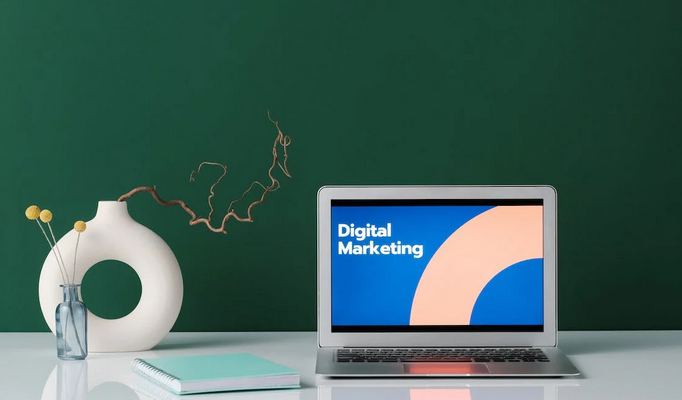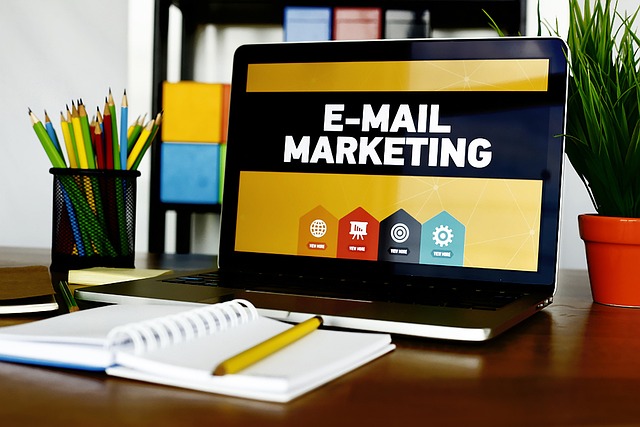
Local SEO Strategies for Law Firms: Ways to Get Found in Your City
In today’s digital landscape, standing out can feel like a daunting task, especially for law firms. With potential clients searching for legal assistance in their local areas, having a robust online presence is crucial. Frisco Law Firm SEO and Marketing strategies provide the key to unlocking visibility right where it matters most in your city. Imagine someone in your neighborhood needing legal help and finding your firm at the top of their search results. That’s not just luck; that’s smart marketing through local optimization strategies designed specifically for lawyers like you.
Understanding the Basics of Local SEO

Local SEO focuses on optimizing your online presence to attract clients within a specific geographic area. For law firms, this means ensuring that potential clients in your city can easily find you when searching for legal services. The foundation of local SEO starts with understanding how search engines prioritize location-based results. When users type in queries like “personal injury lawyer near me,” search engines aim to deliver the most relevant and nearby options. Key elements include using localized keywords, creating content that speaks directly to local issues, and maintaining accurate business information across platforms.
Keyword Research for Local SEO
Keyword research is the foundation of any effective local SEO strategy. It’s about finding what potential clients in your area are searching for when they need legal assistance. Start by brainstorming common legal terms related to your practice area. Think about phrases that include your city or neighborhood name. For instance, a “personal injury lawyer in [City]” can attract clients looking specifically for services near them. Utilize tools like Google Keyword Planner or Ubersuggest to discover search volumes and competition levels. Look for long-tail keywords as they often indicate higher intent and lower competition.
Creating a Google My Business Listing

Creating a Google My Business listing is a game changer for law firms looking to boost their local presence. It’s free and easy to set up, providing your firm with essential visibility in search results. Start by claiming your business on Google. Fill out all the necessary information, including your name, address, phone number, and website link. Accuracy is key; inconsistent details can confuse potential clients. Use high-quality images of your office and team to make a strong first impression. Visuals help build trust and give prospective clients a sense of who you are.
Optimizing Your Website for Local Searches
To optimize your website for local searches, start by incorporating location-specific keywords throughout your content. Use terms that potential clients are likely to search for, such as “family lawyer in [City]” or “personal injury attorney near me.” Next, ensure that your name, address, and phone number (NAP) are consistent across all pages of your site. This consistency helps search engines verify your business’s legitimacy. Another key element is creating localized content. Share blog posts on community events or legal issues relevant to residents in your area. This can help engage visitors while improving SEO.
Leveraging Social Media for Local SEO

Social media is a powerful tool for boosting local SEO efforts. By sharing engaging content, law firms can connect with their community and build brand awareness. Regular updates about legal tips or local events can foster relationships with potential clients. Utilizing platforms like Facebook, Instagram, and LinkedIn allows firms to showcase their expertise while targeting specific demographics within the area. Posts that highlight case studies or client testimonials resonate well, establishing trust among followers.
Building Citations and Online Reviews
Building citations is essential for establishing your law firm’s credibility in local searches. A citation refers to any online mention of your business name, address, and phone number (NAP). These listings help search engines connect your firm with its location. Start by claiming your profiles on well-known directories like Yelp, Avvo, and FindLaw. Ensure that all information matches perfectly across platforms. Consistency boosts trustworthiness in the eyes of search engines. Online reviews carry significant weight …
Local SEO Strategies for Law Firms: Ways to Get Found in Your City Read More


 Did you know that search engines typically display the early 50 to 60 characters of your content title? If you exceed this limit, your precious words may get cut off. That’s why shorter titles tend to hold attention better. Crafting concise yet compelling phrases can make all the difference. So, go ahead and aim for clarity and impact within those constraints. Think about how you can pack meaning into fewer words. Use powerful adjectives or verbs that spark curiosity and engagement without being verbose.
Did you know that search engines typically display the early 50 to 60 characters of your content title? If you exceed this limit, your precious words may get cut off. That’s why shorter titles tend to hold attention better. Crafting concise yet compelling phrases can make all the difference. So, go ahead and aim for clarity and impact within those constraints. Think about how you can pack meaning into fewer words. Use powerful adjectives or verbs that spark curiosity and engagement without being verbose.

 A high uptime guarantee is one of the most critical aspects of quality web hosting. Uptime refers to the time your website is accessible to users without interruptions. Reliable web hosting providers offer uptime guarantees of 99.9% or higher, ensuring that your site remains operational nearly all the time. This high level of availability is crucial for maintaining customer trust and preventing revenue loss due to downtime.
A high uptime guarantee is one of the most critical aspects of quality web hosting. Uptime refers to the time your website is accessible to users without interruptions. Reliable web hosting providers offer uptime guarantees of 99.9% or higher, ensuring that your site remains operational nearly all the time. This high level of availability is crucial for maintaining customer trust and preventing revenue loss due to downtime. Access to reliable customer support is another hallmark of quality web hosting. Issues can arise anytime, and having a responsive support team available 24/7 can make a significant difference in resolving problems quickly. Quality hosting providers offer various support channels to assist with technical issues, including live chat, phone, and email. Prompt and knowledgeable support can help you address any concerns before they escalate into more significant problems, thus minimizing potential downtime.
Access to reliable customer support is another hallmark of quality web hosting. Issues can arise anytime, and having a responsive support team available 24/7 can make a significant difference in resolving problems quickly. Quality hosting providers offer various support channels to assist with technical issues, including live chat, phone, and email. Prompt and knowledgeable support can help you address any concerns before they escalate into more significant problems, thus minimizing potential downtime.
 Responsive design is everything for modern websites. It allows your site to adapt seamlessly to various screen sizes, ensuring a consistent experience across devices. Using flexible grids and layouts, responsive design automatically adjusts content placement based on the user’s device. This means images resize, text reformats, and navigation becomes intuitive.
Responsive design is everything for modern websites. It allows your site to adapt seamlessly to various screen sizes, ensuring a consistent experience across devices. Using flexible grids and layouts, responsive design automatically adjusts content placement based on the user’s device. This means images resize, text reformats, and navigation becomes intuitive. Creating mobile-friendly content is crucial for engaging your audience. Focusing on readability is your golden ticket to it. Use larger fonts and short paragraphs to make the text easy on the eyes. Visuals are equally important. Incorporate images, videos, or infographics that resonate with mobile users. However, make sure they load quickly and fit the screen without distortion. Content should also be scannable. Utilize bullet points, headers, and bold text to highlight key information.
Creating mobile-friendly content is crucial for engaging your audience. Focusing on readability is your golden ticket to it. Use larger fonts and short paragraphs to make the text easy on the eyes. Visuals are equally important. Incorporate images, videos, or infographics that resonate with mobile users. However, make sure they load quickly and fit the screen without distortion. Content should also be scannable. Utilize bullet points, headers, and bold text to highlight key information.
 One of the most common mistakes businesses make is neglecting their Google My Business (GMB) profile. Incomplete or inaccurate information can confuse potential customers and negatively affect search rankings. Ensure that your GMB profile is fully completed with the correct business name, address, phone number, website, and hours of operation. Additionally, regularly update your profile with new photos, posts, and responses to customer reviews.
One of the most common mistakes businesses make is neglecting their Google My Business (GMB) profile. Incomplete or inaccurate information can confuse potential customers and negatively affect search rankings. Ensure that your GMB profile is fully completed with the correct business name, address, phone number, website, and hours of operation. Additionally, regularly update your profile with new photos, posts, and responses to customer reviews. Customer reviews has a vital role in local SEO. Ignoring reviews or failing to respond to them can harm your reputation online and deter potential customers. Actively manage your reviews by encouraging satisfied customers to give positive feedback and promptly responding to negative reviews. Addressing reviews demonstrates that you value customer feedback and are committed to improving your services.
Customer reviews has a vital role in local SEO. Ignoring reviews or failing to respond to them can harm your reputation online and deter potential customers. Actively manage your reviews by encouraging satisfied customers to give positive feedback and promptly responding to negative reviews. Addressing reviews demonstrates that you value customer feedback and are committed to improving your services.
 Imagine visiting a website on your phone, only to find that you must constantly zoom in and out to read the content. Frustrating, right? This is where responsive design comes into play. Users can effortlessly navigate through your site without any hiccups by ensuring that your website adjusts smoothly to different screen sizes. A seamless user experience keeps visitors engaged and encourages them to explore more of your site’s offerings. With responsive design, elements like images, text, and buttons are optimized for each device, creating a consistent look.
Imagine visiting a website on your phone, only to find that you must constantly zoom in and out to read the content. Frustrating, right? This is where responsive design comes into play. Users can effortlessly navigate through your site without any hiccups by ensuring that your website adjusts smoothly to different screen sizes. A seamless user experience keeps visitors engaged and encourages them to explore more of your site’s offerings. With responsive design, elements like images, text, and buttons are optimized for each device, creating a consistent look. When it comes to
When it comes to 
 Visual marketing captures attention and creates interest in a way that text alone cannot. By utilizing eye-catching images, videos, and graphics, businesses can quickly engage potential customers and entice them to explore further. Visuals can convey information more quickly and effectively, making it easier for customers to understand product features, benefits, and value propositions.
Visual marketing captures attention and creates interest in a way that text alone cannot. By utilizing eye-catching images, videos, and graphics, businesses can quickly engage potential customers and entice them to explore further. Visuals can convey information more quickly and effectively, making it easier for customers to understand product features, benefits, and value propositions. Visuals have the power to simplify complex information and make it easier for customers to understand and make purchasing decisions. Infographics, charts, and diagrams can break down complicated concepts or data into digestible visuals, enabling customers to grasp the value proposition or benefits of a product quickly. Additionally, visual calls-to-action (CTAs) strategically placed throughout the user journey can prompt customers to take the desired action, such as making a purchase, subscribing, or sharing on social media. By strategically incorporating high-quality images, videos, interactive
Visuals have the power to simplify complex information and make it easier for customers to understand and make purchasing decisions. Infographics, charts, and diagrams can break down complicated concepts or data into digestible visuals, enabling customers to grasp the value proposition or benefits of a product quickly. Additionally, visual calls-to-action (CTAs) strategically placed throughout the user journey can prompt customers to take the desired action, such as making a purchase, subscribing, or sharing on social media. By strategically incorporating high-quality images, videos, interactive 






 Backlinks, also known as inbound links, play a vital role in determining your website’s authority and credibility. When reputable sites link to your content, search engines interpret it as a vote of confidence, signaling that your content is valuable and trustworthy. As a result, your website’s ranking in search results can improve significantly. Focus on creating high-quality content that naturally attracts backlinks from other reputable websites. Building relationships with industry influencers and participating in guest posting opportunities can also contribute to gaining valuable backlinks.
Backlinks, also known as inbound links, play a vital role in determining your website’s authority and credibility. When reputable sites link to your content, search engines interpret it as a vote of confidence, signaling that your content is valuable and trustworthy. As a result, your website’s ranking in search results can improve significantly. Focus on creating high-quality content that naturally attracts backlinks from other reputable websites. Building relationships with industry influencers and participating in guest posting opportunities can also contribute to gaining valuable backlinks.

 In today’s fast-paced
In today’s fast-paced  This is, in fact, the backbone of any successful website. It works wonders in attracting and engaging visitors, as well as improving search engine rankings. In simple words, quality content is non-negotiable. Quality content should be informative and valuable to the target audience. It should answer their questions, address their pain points, or provide them with valuable insights.
This is, in fact, the backbone of any successful website. It works wonders in attracting and engaging visitors, as well as improving search engine rankings. In simple words, quality content is non-negotiable. Quality content should be informative and valuable to the target audience. It should answer their questions, address their pain points, or provide them with valuable insights.






 Optimizing your Shopify images for SEO can significantly improve your search engine ranking, making it easier for potential customers to find you. Search engines like Google use complex algorithms that consider various factors when ranking websites. One of the critical elements is image optimization. When optimizing images for SEO, several factors exist, including file size and format, alt text, and file name.
Optimizing your Shopify images for SEO can significantly improve your search engine ranking, making it easier for potential customers to find you. Search engines like Google use complex algorithms that consider various factors when ranking websites. One of the critical elements is image optimization. When optimizing images for SEO, several factors exist, including file size and format, alt text, and file name. Enhanced accessibility is an essential aspect of optimizing your Shopify images for SEO. A well-optimized online store should cater to a diverse range of users, including those with visual impairments or other disabilities. By considering the needs of these users in your image optimization strategy, you can create a more inclusive shopping experience and enhance
Enhanced accessibility is an essential aspect of optimizing your Shopify images for SEO. A well-optimized online store should cater to a diverse range of users, including those with visual impairments or other disabilities. By considering the needs of these users in your image optimization strategy, you can create a more inclusive shopping experience and enhance 
 Dynamic content creation is a great way to keep your audience engaged and interested in your brand. Creating content that changes based on user preferences can provide a unique experience for each visitor. This can be done by incorporating interactive elements like quizzes and polls or by providing personalized recommendations based on past purchases. Additionally, dynamic content can help boost engagement and conversions by presenting users with relevant, up-to-date information tailored to their interests.
Dynamic content creation is a great way to keep your audience engaged and interested in your brand. Creating content that changes based on user preferences can provide a unique experience for each visitor. This can be done by incorporating interactive elements like quizzes and polls or by providing personalized recommendations based on past purchases. Additionally, dynamic content can help boost engagement and conversions by presenting users with relevant, up-to-date information tailored to their interests. User-generated content can be a powerful way to build trust and engagement with your audience. By leveraging content created by actual customers, you can showcase real-life stories that relate to the brand and help make an emotional connection with potential customers. Additionally, user-generated content can be used to provide valuable insights into customer behavior and preferences, which can be used to inform future marketing decisions.
User-generated content can be a powerful way to build trust and engagement with your audience. By leveraging content created by actual customers, you can showcase real-life stories that relate to the brand and help make an emotional connection with potential customers. Additionally, user-generated content can be used to provide valuable insights into customer behavior and preferences, which can be used to inform future marketing decisions.

 Online marketing is also cost-effective compared to traditional
Online marketing is also cost-effective compared to traditional 





 One of the first things a good SEO company should do is conduct keyword research and analysis. This involves identifying the terms and phrases people use to search for products or services like yours. By understanding the keywords relevant to your business, an SEO company can help you create content that targets those keywords and improves your chances of ranking on search engines. Sites like
One of the first things a good SEO company should do is conduct keyword research and analysis. This involves identifying the terms and phrases people use to search for products or services like yours. By understanding the keywords relevant to your business, an SEO company can help you create content that targets those keywords and improves your chances of ranking on search engines. Sites like  A good SEO company should be able to provide regular reports on the progress of your SEO efforts. These reports should include metrics like website traffic, keyword rankings, and the number of backlinks your website has gained. By regularly analyzing these metrics, an SEO company can help you understand the effectiveness of your SEO strategy and make any necessary adjustments.
A good SEO company should be able to provide regular reports on the progress of your SEO efforts. These reports should include metrics like website traffic, keyword rankings, and the number of backlinks your website has gained. By regularly analyzing these metrics, an SEO company can help you understand the effectiveness of your SEO strategy and make any necessary adjustments.
 Another way to rebrand effectively is to create
Another way to rebrand effectively is to create 

 This is a mistake a lot of businesses make, not just on social media but in their marketing efforts as a whole. They think they can sell to everyone and that everyone will be interested in what they have to offer. But the truth is, that’s just not realistic. Defining your target demographic and creating content that appeals to them is important. Not only will this help you attract more of your ideal customers, but it will also save you a lot of time and money in the long run.
This is a mistake a lot of businesses make, not just on social media but in their marketing efforts as a whole. They think they can sell to everyone and that everyone will be interested in what they have to offer. But the truth is, that’s just not realistic. Defining your target demographic and creating content that appeals to them is important. Not only will this help you attract more of your ideal customers, but it will also save you a lot of time and money in the long run.